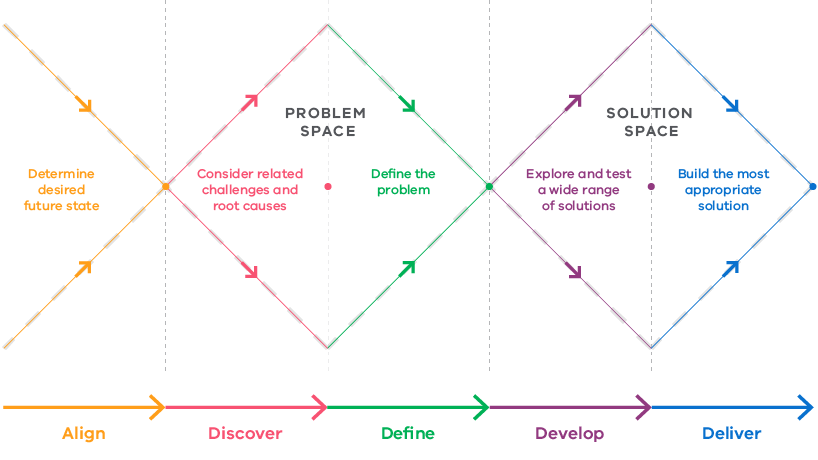Time frame: 12 months
Budget: $80,000
Team size: 4
Key contact: Simone Millen
How do you involve staff in designing the way they work?
The Department of Premier and Cabinet (DPC) was keen to be more agile and collaborative. The Ignite team knew the physical work environment and the technology were critical parts of making this happen.
However the most important part was the human element. Moving to a digitally-enabled, modern workplace would challenge culture and behaviour. The risk was staff would not embrace the change.
To manage this, staff were asked to participate in the design of the workplace they were seeking. The Ignite team used human-centred design methods, tools and mindsets to bring hundreds of staff along on the design journey.
Project goals
The IGNITE project aimed to:
-
reduce or eliminate travel time between offices
-
improve collaboration and communication between colleagues and visitors
-
enable more flexibility in the workspace and work arrangements
-
offer modern, superior building and office amenities
Outcome and results
- The IGNITE project transformed the DPC workplace including the rollout of premium digital technologies and tools to sustain an engaged, empowered and high-performing workforce and creating environments that support staff to structure their working life in a way that works for them, allowing greater autonomy and flexibility in how work gets done.
- Hundreds of DPC staff as well as subject matter experts engaged with the design process in a targeted and representative staff consultation that provided a better understanding of DPC’s workplace requirements than ever before.
- There was almost no variation or changes in scope to the detailed design after the architects delivered their plans. This is very rare and reflected how well staff requirements were captured through the co-design process. There were no nasty surprises that needed to be accommodated. New workspaces were delivered to DPC staff quickly and at a reduced cost.
- The design of our workspace can be reproduced across government – other departments and agencies are looking to DPC as leaders in workplace transformation
Ignite design process
Updated

